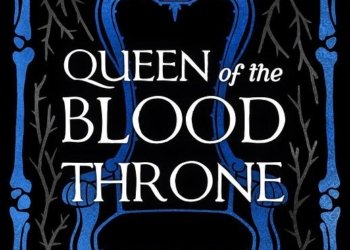No products in the cart.
Go Set a Watchman by Harper Lee
In Harper Lee’s Go Set a Watchman, Jean Louise Finch, who now resides in New York City, makes an annual trek back to Maycomb, Alabama, to see her father Atticus. For those who were curious, Scout (Jean Louise) develops into a snob. She is conceited and treats everyone around her with a feeling that may be compared to scorn, yet she may have a soft place for her father and Henry to a lesser extent. She hates her aunt Alexandra for insisting on having her way all the time and manipulating circumstances to suit her, but Scout is exactly like her.
A recent book that has been released is called Go Set a Watchman. Lee claims that after Go Set a Watchman was rejected by publishers, she put the book on hold in order to work on To Kill a Mockingbird, a smash hit. When creating the subsequent work, she significantly altered the characters based on actual readings.
It’s difficult to imagine an occurrence like the one described in To Kill a Mockingbird occurring in the past of the man we meet in Go Set a Watchman because Atticus stands up for the oppressed in that book. What was remarkably acceptable in the middle of the 1950s would be classified by anyone now as cruel and bigoted. The Civil Rights movement, while revving up at the time, didn’t hit its full and forward moving stride until the 1960s. Lee’s comment on race relations would have been shocking for her time.
In Go Set a Watchman, Jean Louise is seeking self-discovery, family revolution, and maybe world transformation. She isn’t prepared to conform to the day’s expectations. Henry Clinton, who Alexandra believes is in no way family-appropriate, is her potential spouse. He became Atticus’s protege only after Jem, a significant figure in To Kill a Mockingbird, passed away. The revelation that her connection with the family maid was based on Calpurnia’s duty to the family shocks the self-absorbed 20-something when Calpurnia’s grandson is accused of the manslaughter of a white man.
Go Set a Watchman is full with mistakes. Some have speculated that the publisher may not have edited the book because of the controversy surrounding it. Although it’s a possibility, I believe the spirit might be preserved while fixing the book’s POV issues. Given the elegance of Lee’s style, several of the shifts are rather abrupt and could have been smoothed out.
These anticipations will only lead to disappointment. Go Set a Watchman, a lyrically written work about a lady living in a time where race is a constant concern and when horrible things happen, skin, colour decides the outcome of consequence, is best read without keeping in mind the more well-known work. Readers’ most pressing concern would be whether this book reads like something the author would want to publish and be glad to see on book shelves. Harper Lee may have felt secure at some point as she sent it to publishers, but the book still requires improvement.
Given the length of time she resisted its release, Lee was aware of the mistakes, therefore it is not a coincidence that it was published right after the passing of her main guardian. I’m pleased I read it because, if nothing else, it shows that Lee had the ability to achieve great things in the future but, for whatever reason, decided against developing her skill. With work Go Set a Watchman could match its epic sister novel.
Should you recommend reading Go Set a Watchman? I am aware that some people are reluctant to purchase the art because they don’t want to put money in the hands of those who are robbing Lee. Already a best seller, the piece. Pick up Go Set a Watchman if you’re a fan of Lee and see for yourself how the characters were altered to make them perhaps more revolutionary at the time. Go Set a Watchman is a worthwhile read despite its flaws and the controversy that followed its publication, even if just as a footnote in literature.
About The Book
A landmark novel by Harper Lee, set two decades after her beloved Pulitzer Prize–winning masterpiece, To Kill a Mockingbird.
Twenty-six-year-old Jean Louise Finch—“Scout”—returns home to Maycomb, Alabama from New York City to visit her aging father, Atticus. Set against the backdrop of the civil rights tensions and political turmoil that were transforming the South, Jean Louise’s homecoming turns bittersweet when she learns disturbing truths about her close-knit family, the town, and the people dearest to her.
Memories from her childhood flood back, and her values and assumptions are thrown into doubt. Featuring many of the iconic characters from To Kill a Mockingbird, Go Set a Watchman perfectly captures a young woman, and a world, in painful yet necessary transition out of the illusions of the past—a journey that can only be guided by one’s own conscience.
Written in the mid-1950s, Go Set a Watchman imparts a fuller, richer understanding and appreciation of the late Harper Lee. Here is an unforgettable novel of wisdom, humanity, passion, humor, and effortless precision—a profoundly affecting work of art that is both wonderfully evocative of another era and relevant to our own times. It not only confirms the enduring brilliance of To Kill a Mockingbird, but also serves as its essential companion, adding depth, context, and new meaning to an American classic.
The Review
Go Set a Watchman
8.5 Score
Atticus did not hate blacks nor did he fear them. Rather he thought them children who he needed to protect. He believed that in time they would perhaps become a mature race but that they were not at that point in their evolution. He, like most southerners at the time resist change. It scares them. But, he attended a Klan meeting only to find out who was behind the masks. He's still a decent person. He's just a man and not a god like his daughter thought he was. The town is racist and "many" whites do feel superior for the most part. But the Finches really do not.
PROS
- Powerful & Challenging.
- A Historical Masterpiece.
- Atticus In Eclipse.
- Powerfully Written And Consequential.
CONS
- Awful And Hateful.
- Poorly Written Book.
- Heartbreaking Disappointment.
- An Inconsequential Melodrama.











